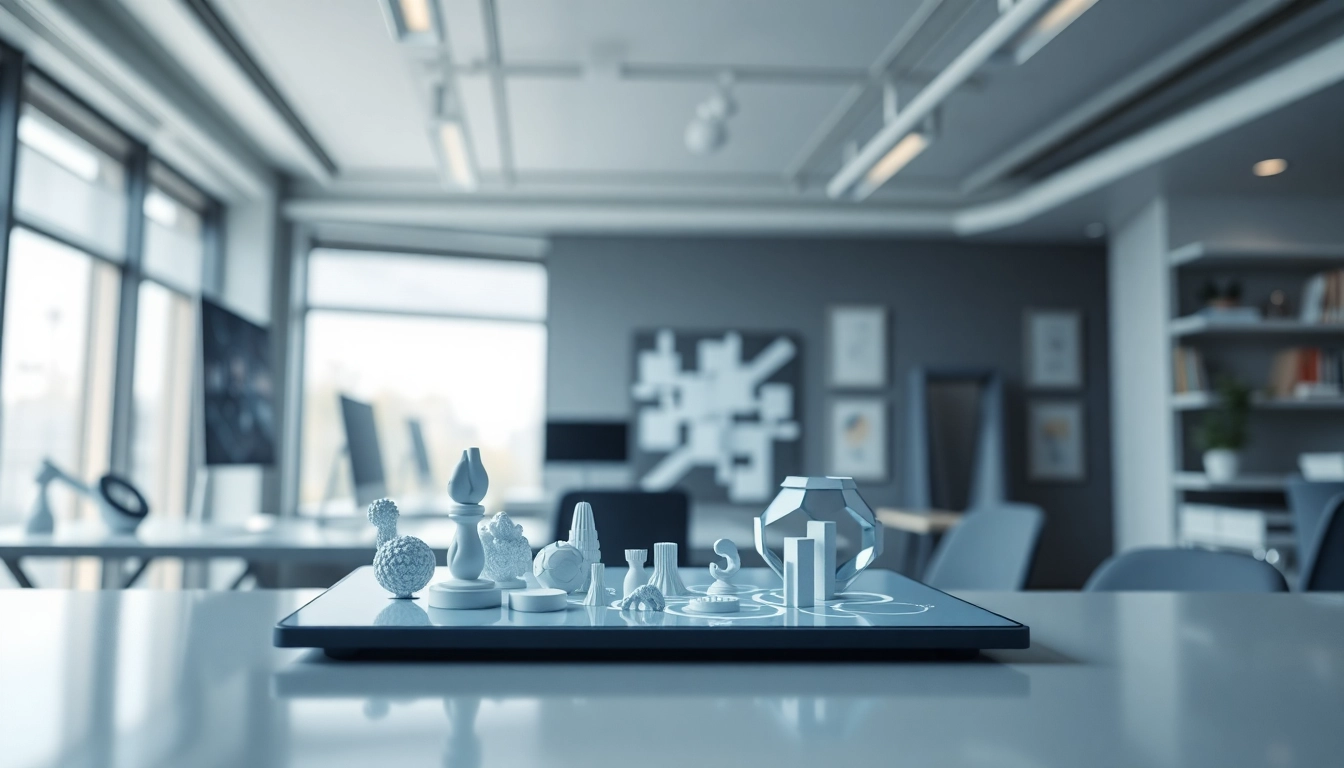Understanding 3D Model Visualizations
In an increasingly digital world, 3D model visualizations have emerged as a powerful tool for communicating complex information in a visually engaging manner. Leveraging advanced technology and software, these visualizations transform data into compelling visuals that enhance understanding, attract attention, and facilitate decision-making processes. As we explore the realm of 3D Model Visualizations, we will dissect their function, importance, and the key technologies that power them.
What Are 3D Model Visualizations?
3D model visualizations are digital representations of objects, environments, or data, presented in three dimensions. These visualizations can be used across various fields, including architecture, product design, animation, and scientific research. They provide viewers with a realistic view of a product or environment, allowing for better analysis and understanding of spatial relationships, textures, and structural details.
Methods for creating 3D visualizations often include techniques like 3D rendering, photogrammetry, and computer-generated imagery (CGI). These processes enable industries to create highly detailed and interactive visual experiences.
Key Technologies Behind 3D Model Visualizations
Several foundational technologies contribute to the effectiveness of 3D model visualizations. These include:
- 3D Modeling Software: Programs such as Blender, Autodesk Maya, and SketchUp allow designers to create detailed 3D models from scratch or modify existing ones.
- Rendering Engines: Software like V-Ray and Unity helps process and present 3D models visually, applying lighting, shading, and textures to create lifelike images.
- Virtual Reality (VR) and Augmented Reality (AR): These technologies take 3D visualizations to the next level by creating immersive experiences, allowing users to interact with models in real-time.
Importance of 3D Model Visualizations in Business
In the business context, 3D model visualizations are instrumental across various sectors. They enhance marketing efforts by providing potential customers with immersive previews of products, increasing engagement and conversion rates. Furthermore, they play a crucial role in collaboration, enabling teams to visualize concepts, gather feedback, and make informed decisions during the design process.
Benefits of Using 3D Model Visualizations
Visual Storytelling and Engagement
Visual storytelling is a powerful communication technique, and 3D model visualizations excel at it. They allow businesses to tell their stories in captivating ways, whether in marketing campaigns, presentations, or educational materials. This engagement can lead to improved customer interest and understanding, fostering brand loyalty.
Cost Efficiency in Prototyping
One of the significant benefits of 3D model visualizations is their cost-effectiveness in prototyping. Traditional prototyping methods can be resource-intensive and time-consuming. However, with 3D visualizations, companies can create virtual prototypes, significantly reducing material costs and project timelines.
Enhanced Collaboration and Feedback Loops
3D model visualizations facilitate better collaboration within teams and with clients. By presenting visualizations, stakeholders can provide meaningful feedback on design elements, streamline the decision-making process, and prevent miscommunications that often occur with traditional design methods.
Tools and Software for 3D Model Visualizations
Overview of Leading 3D Visualization Software
The landscape of 3D visualization software is rich with options, varying in complexity, features, and pricing. Some of the leading software tools include:
- Blender: An open-source, highly versatile software perfect for users of all skill levels, offering modeling, sculpting, and rendering capabilities.
- Autodesk Maya: A professional-grade tool widely used in animation and gaming, known for its advanced features and flexibility.
- SketchUp: Ideal for beginners and professionals alike, designed for creating architectural models and adding intricate details easily.
- Unity: Primarily a game development engine, Unity provides robust capabilities for real-time 3D visualizations and experiences.
Comparing Free & Paid 3D Model Tools
When considering software options, users often face the choice between free and paid tools. Free software, like Blender, may have a steeper learning curve, but it offers immense capabilities without financial investment. On the other hand, paid software generally provides a more user-friendly interface and additional resources, tutorials, and customer support, making them appealing to businesses requiring quick deployment and high-quality results.
Essential Features in 3D Visualization Software
Choosing the right software for 3D visualization projects requires an understanding of essential features to look for:
- User Interface: An intuitive user interface can significantly impact a user’s experience and efficiency, particularly for beginners.
- Rendering Capabilities: The quality of renders—including lights, shadows, and textures—can make or break the effectiveness of a visualization.
- Compatibility with Other Software: Some tools work seamlessly with other platforms, such as CAD software or game engines, enhancing workflow.
- Support for Animation: If the project requires animations, it’s crucial to select software that offers robust motion and rigging features.
Creating Effective 3D Model Visualizations
Step-by-Step Guide to Developing 3D Visualizations
Creating impactful 3D model visualizations involves several steps:
- Concept Development: Outline the goals of the visualization and what message it should convey.
- Model Creation: Utilize chosen software to create or modify 3D models that meet project specifications.
- Texturing and Lighting: Apply realistic textures and set appropriate lighting that enhances the model’s appeal.
- Rendering: Depending on the intended use (digital display, print, etc.), select rendering settings that optimize quality and performance.
- Feedback and Iteration: Share the visualization with stakeholders for feedback, refine based on insights, and finalize the model.
Best Practices for Designing User-Friendly Models
User-friendly designs ensure effective communication of ideas. Here are best practices to consider:
- Simplicity: Avoid clutter; focus on key features that need highlighting.
- Interactivity: Where possible, add interactive elements that allow users to explore the model themselves.
- Consistency: Maintain consistent design language across all visualizations for branding and coherence.
Common Mistakes to Avoid in 3D Visualizations
While creating 3D models, it’s important to avoid common pitfalls:
- Overcomplicating Models: Detailed models may look impressive but can overwhelm users. Keep it clear.
- Neglecting Target Audience: Tailor visualizations to the understanding level and expectations of your audience.
- Ignoring Feedback: Not iterating based on feedback can lead to a final product that fails to resonate.
The Future of 3D Model Visualizations
Emerging Trends in 3D Visualization Technology
Technological advancements continually reshape the landscape of 3D model visualizations. Key trends to watch include:
- AI Integration: Artificial intelligence is increasingly being used to automate modeling, optimize render settings, and enhance realism.
- Real-Time Rendering: Technology improvements allow for real-time feedback during modeling, drastically speeding up workflows.
- Cloud-Based Solutions: As remote work becomes more prevalent, cloud-based visualization tools facilitate collaboration without constraints of location.
Predictions for the Next Generation of 3D Model Visualizations
Looking ahead, we can predict that:
- 3D model visualizations will become even more accessible due to improved user interfaces and guided workflows.
- More industries, from real estate to education, will leverage 3D visualizations for standard practices.
- As 5G networks become widespread, mobile and remote 3D visualizations will experience a significant boost in quality and interactivity.
Integrating AR and VR with 3D Model Visualizations
The integration of augmented reality (AR) and virtual reality (VR) with 3D model visualizations opens new doors for interaction:
- AR can bring 3D models into real-world contexts, allowing users to visualize furniture in their living space or architectural designs within their environment.
- VR enables immersive experiences where users can walk through rendered environments or interact with products as if they’re physical objects.
These technologies not only enhance the user experience but also expand the potential applications of 3D model visualizations across industries.



